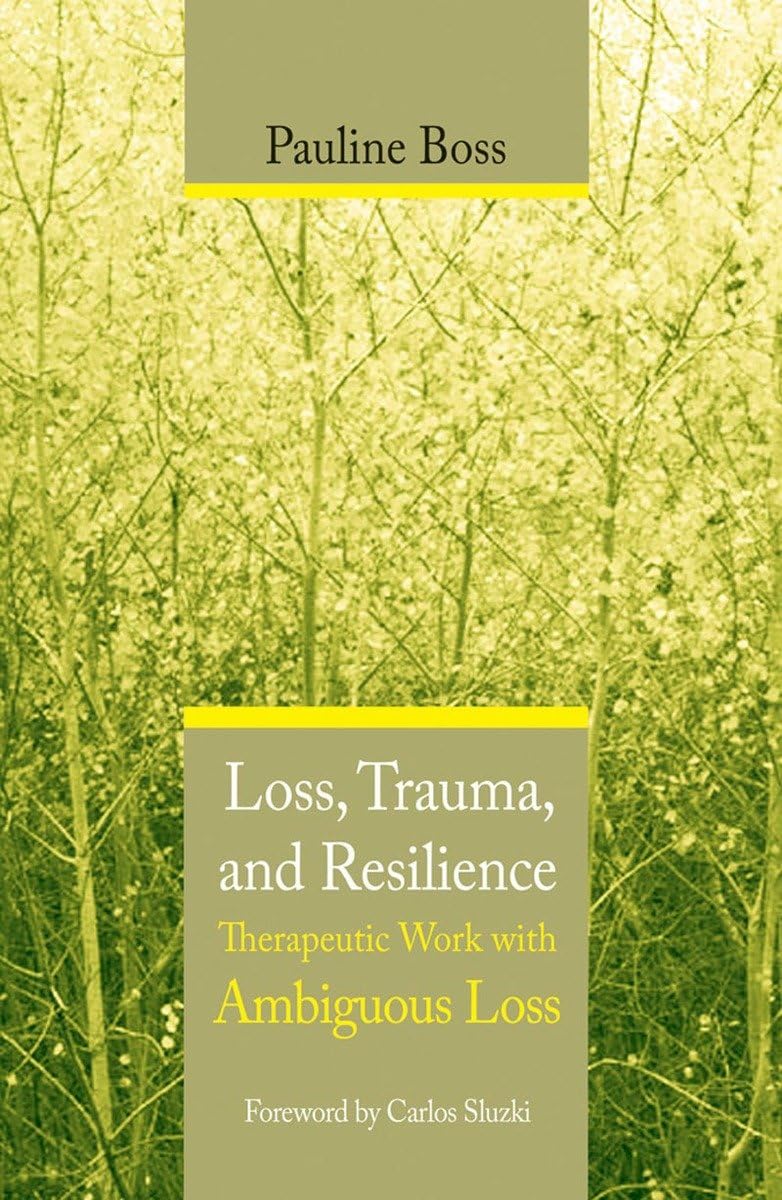
How To Out-Cheat “Cheat Days”
10almonds is reader-supported. We may, at no cost to you, receive a portion of sales if you purchase a product through a link in this article.
Out-Cheating “Cheat Days” (Or Even Just “Cheat Meals”)
If you are in the habit of eating healthily, the idea of a “cheat day” probably isn’t appealing—because you simply don’t crave junk food; it’s not what your gut is used to.
Nevertheless, sometimes cheat days, or at least cheat meals, choose us rather than the other way around. If your social group is having a pizza night or meeting up at the burger bar, probably you’re going to be having a meal that’s not ideal.
So, what to do about it?
Well, first of all, relax. If it really is an exception and not a regular occurrence, it’s not going to have a big health impact. Assuming that your basic dietary requirements are taken care of (e.g. free from allergens as necessary, vegan/vegetarian if that’s appropriate for you, adhering to any religious restrictions that are important to you, etc), then you’re going to have a good time, which is what scientists call a “pro-social activity” and is not a terrible thing.
See also: Is Fast Food Really All That Bad? ← answer: yes it is, but the harm is cumulative and won’t all happen the instant you take a bite of a chicken nugget
Think positive
No, not in the “think positive thoughts” sense (though feel free, if that’s your thing), but rather: focus on adding things rather than subtracting things.
It’s said:
❝It’s not the calories in your food that make the biggest impact on your health; it’s the food in your calories❞e
…and that’s generally true. The same goes for “bad things” in the food, e.g. added sugar, salt, seed oils, etc. They really are bad! But, in this case you’re going to be eating them and they’re going to be nearly impossible to avoid in the social scenarios we described. So, forget that sunk treasure, and instead, add nutrients.
10almonds tip: added nutrients remain added nutrients, even if the sources were not glowing with health-appeal and/or you ate them alongside something unhealthy:
- Those breaded garlic mushrooms are still full of magnesium and fiber and ergothioneine.
- The chili-and-mint peas that came as an overpriced optional side-dish with your burger are still full of protein, fiber, and a stack of polyphenols.
…and so on. And, the more time you spend eating those things, the less time you spend eating the real empty-calorie foods.
Fix the flaw
We set out to offer this guide without arguing for abstemiousness or making healthy substitutions, because we assume you knew already that you can not eat things, and as for substitutions, often they are not practical, especially if dining out or ordering in.
Also, sometimes even when home-cooking something unhealthy, taking the bad ingredient out takes some of the joy out with it.
Writers example: I once incorrectly tried to solve the fat conundrum of my favorite shchi (recipe here) by trying purely steaming the vegetables instead of my usual frying/sautéing them, and let’s just say, that errant-and-swiftly-abandoned version got recorded in my nutrition-tracker app as “sad shchi”.
So instead, fix the flaw by countering it if possible:
- The meal is devoid of fiber? Preload with some dried figs (you can never have too many dried figs in your pantry)
- The meal is high in saturated fat? Enjoy fiber before/during/after, per what’s convenient for you. Fiber helps clear out excess cholesterol, which is usually the main issue with saturated fat.
- The meal is salty? Double down on your hydration before, during, and after. If that sounds like a chore, then remember, it’s more fun than getting bloated (which results, counterintuitively, from dehydration—because your body detects the salt, and panics and tries to retain as much water as possible to restore homeostasis, resulting in bloating) and hypertensive (which results from the combination of the blood having too much salt and too little water, and cells retaining too much water and pressing inwards because it is the cells themselves that are bloated). So, tending to your hydration can help mitigate all of the above.
- The meal is full of high-GI carbs? Preload with fiber, enjoy the carbs together with fats, and have something acidic (e.g. some kind of vinegar, or citrus fruit) with it if that’s a reasonable option. Yes, this does mean that a Whiskey Sour is better for your blood sugars than an Old Fashioned, by the way, and/but no, it doesn’t make either of them healthy.
- The meal is inflammatory? Doing all of the above things will help, as will eating it slowly/mindfully, which latter makes it less of a shock to your system.
See also: How To Get More Nutrition From The Same Food
Enjoy!
Don’t Forget…
Did you arrive here from our newsletter? Don’t forget to return to the email to continue learning!
Recommended
Learn to Age Gracefully
Join the 98k+ American women taking control of their health & aging with our 100% free (and fun!) daily emails:
-
Intermittent Fasting In Women
10almonds is reader-supported. We may, at no cost to you, receive a portion of sales if you purchase a product through a link in this article.
It’s Q&A Day at 10almonds!
Have a question or a request? We love to hear from you!
In cases where we’ve already covered something, we might link to what we wrote before, but will always be happy to revisit any of our topics again in the future too—there’s always more to say!
As ever: if the question/request can be answered briefly, we’ll do it here in our Q&A Thursday edition. If not, we’ll make a main feature of it shortly afterwards!
So, no question/request too big or small
❝Does intermittent fasting differ for women, and if so, how?❞
For the sake of layout, we’ve put a shortened version of this question here, but the actual wording was as below, and merits sharing in full for context
Went down a rabbit hole on your site and now can’t remember how I got to the “Fasting Without Crashing” article on intermittent fasting so responding to this email lol, but was curious what you find/know about fasting for women specifically? It’s tough for me to sift through and find legitimate studies done on the results of fasting in women, knowing that our bodies are significantly different from men. This came up when discussing with my sister about how I’ve been enjoying fasting 1-2 days/week. She said she wanted more reliable sources of info that that’s good, since she’s read more about how temporary starvation can lead to long-term weight gain due to our bodies feeling the need to store fat. I’ve also read about that, but also that fasting enables more focused autophagy in our bodies, which helps with long-term staving off of diseases/ailments. Curious to know what you all think!
~ 10almonds subscriber
So, first of all, great question! Thanks for asking it
Next up, isn’t it strange? Books come in the format:
- [title]
- [title, for women]
You would not think women are a little over half of the world’s population!
Anyway, there has been some research done on the difference of intermittent fasting in women, but not much.
For example, here’s a study that looked at 1–2 days/week IF, in other words, exactly what you’ve been doing. And, they did have an equal number of men and women in the study… And then didn’t write down whether this made a difference or not! They recorded a lot of data, but neglected to note down who got what per sex:
Here’s a more helpful study, that looked at just women, and concluded:
❝In conclusion, intermittent fasting could be a nutritional strategy to decrease fat mass and increase jumping performance.
However, longer duration programs would be necessary to determine whether other parameters of muscle performance could be positively affected by IF. ❞
~ Dr. Martínez-Rodríguez et al.
Those were “active women”; another study looked at just women who were overweight or obese (we realize that “active women” and “obese or overweight women” is a Venn diagram with some overlap, but still, the different focus is interesting), and concluded:
❝IER is as effective as CER with regard to weight loss, insulin sensitivity and other health biomarkers, and may be offered as an alternative equivalent to CER for weight loss and reducing disease risk.❞
As for your sister’s specific concern about yo-yoing, we couldn’t find studies for this yet, but anecdotally and based on books on Intermittent Fasting, this is not usually an issue people find with IF. This is assumed to be for exactly the reason you mention, the increased cellular apoptosis and autophagy—increasing cellular turnover is very much the opposite of storing fat!
You might, by the way, like Dr. Mindy Pelz’s “Fast Like A Girl”, which we reviewed previously
Take care!
Share This Post
-
Loss, Trauma, and Resilience – by Dr. Pauline Boss
10almonds is reader-supported. We may, at no cost to you, receive a portion of sales if you purchase a product through a link in this article.
Most books about bereavement are focused on grieving healthily and then moving on healthily. And, while it may be said “everyone’s grief is on their own timescale”… society’s expectation is often quite fixed:
“Time will heal”, they say.
But what if it doesn’t? What happens when that’s not possible?
Ambiguous loss occurs when someone is on the one hand “gone”, but on the other hand, not necessarily.
This can be:
- Someone was lost in a way that didn’t leave a body to 100% confirm it
- (e.g. disaster, terrorism, war, murder, missing persons)
- Someone remains physically present but in some ways already “gone”
- (e.g. Alzheimer’s disease or other dementia, brain injury, coma)
These things stop us continuing as normal, and/but also stop us from moving on as normal.
When either kind of moving forward is made impossible, everything gets frozen in place. How does one deal with that?
Dr. Boss wrote this book for therapists, but its content is equally useful for anyone struggling with ambiguous loss—or who has a loved one who is, in turn, struggling with that.
The book looks at the impact of ambiguous loss on continuing life, and how to navigate that:
- How to be resilient, in the sense of when life tries to break you, to have ways to bend instead.
- How to live with the cognitive dissonance of a loved one who is a sort of “Schrödinger’s person”.
- How, and this is sometimes the biggest one, to manage ambiguous loss in a society that often pushes toward: “it’s been x period of time, come on, get over it now, back to normal”
Will this book heal your heart and resolve your grief? No, it won’t. But what it can do is give a roadmap for nonetheless thriving in life, while gently holding onto whatever we need to along the way.
Click here to check out “Ambiguous loss, Trauma, and Resilience” on Amazon—it can really help
Share This Post
- Someone was lost in a way that didn’t leave a body to 100% confirm it
-
No, vitamin A does not prevent measles
10almonds is reader-supported. We may, at no cost to you, receive a portion of sales if you purchase a product through a link in this article.
As measles spreads in Texas, New Mexico, and other states, a Texas child died from measles for the first time in the United States since 2015. In a March 2 Fox News editorial, Health and Human Services Secretary Robert F. Kennedy Jr. hinted at the importance of vaccination and stated that good nutrition, including vitamin A, is a “best defense against most chronic and infectious illnesses.”
However, doctors and public health professionals say that vitamin A is not a replacement for the measles, mumps, and rubella (MMR) vaccine. Vitamin A is sometimes used to treat measles in the hospital—particularly in developing countries where people with poor nutrition tend to be vitamin A deficient. Experts also say that taking vitamin A when your body does not need it can be dangerous.
“It’s really important to distinguish prevention and treatment, and measles can be prevented, and it can be prevented one way: through vaccination,” Dr. Preeti Malani, infectious disease physician and professor at the University of Michigan, tells PGN. “The best treatment is to not get measles in the first place.”
Read on to learn the facts about vitamin A, what it’s used for, its risks, and what you should do to prevent measles.
What is vitamin A, and what does it have to do with measles?
Vitamin A is a fat-soluble vitamin, which means that it’s stored in the body’s fatty tissue and in the liver, and it’s absorbed with the fat in a person’s diet. Vitamin A helps with our vision, reproduction, growth, and immunity.
Vitamin A deficiency can increase the risk of death from measles, among other infections. The World Health Organization recommends it as a supplement along with vaccination for children at risk of vitamin A deficiency in developing countries.
However, vitamin A deficiency is rare in the U.S. because most people get enough of it through their diet. (Malani says that’s why research about the use of vitamin A to treat measles is limited in countries like the United States.)
“Vitamin A deficiency is a major problem in developing nations, particularly those that don’t have access to staple foods that have vitamin A,” says Andrea Love, PhD, a biomedical scientist and founder of the health communication organization Immunologic, to PGN. “The problem is that that’s been kind of extrapolated to high-income countries [like the United States], where vitamin A deficiency is really not a concern.”
Under Kennedy’s direction, the Centers for Disease Control and Prevention recently updated its guidance to recommend the use of vitamin A to treat severe measles in young children, but specifically in a hospital setting and under a doctor’s supervision.
Does vitamin A prevent measles?
No. Vitamin A does not prevent measles. The MMR vaccine is the best way to prevent a measles infection.
“Vitamin A is not an alternative to vaccination,” Malani adds. “We have a safe and highly effective vaccine that’s been available for decades—it will protect individuals [and] communities from an outbreak.”
Are there any risks to taking vitamin A?
Yes. If your body doesn’t need extra vitamin A, there are risks.
According to the National Institutes of Health, taking too much vitamin A (specifically, the type found in supplements and some medications) can cause nausea, severe headaches, blurred vision, muscle aches, and problems with coordination. In severe cases, it can also lead to coma and death. Taking too much vitamin A while pregnant can cause birth defects.
“If you’re already getting sufficient vitamin A from your diet, then when you consume more than what you need, those levels are going to build up in your body, in your fat stores, in your tissues, and you’re going to be at risk of both acute and chronic toxicity,” adds Love.
Water-soluble vitamins like vitamin C “get filtered out by your kidneys and you would pee it out, but fat-soluble vitamins [like vitamin A], don’t get processed and excreted as quickly; they start to build up in the body,” she says.
What can I do to protect myself from measles?
The MMR vaccine is the best way to protect yourself from measles. The CDC recommends children get two doses of the MMR vaccine: the first dose between 12 and 15 months and the second one between 4 and 6 years old.
Experts recommend that adults who are not sure about their vaccination or immunity status against measles get at least one dose of the MMR vaccine. Additionally, adults who are at high risk for measles (like health care workers and people who travel internationally) may need two additional doses.
According to the CDC, you can also get an MMR vaccine within 72 hours of initial exposure to measles, which can give you some protection or make your illness less severe. Additionally, there’s an antibody (a protective protein called immunoglobulin) that a doctor may recommend for high-risk people within six days of being exposed to measles.
For more information, talk to your health care provider.
This article first appeared on Public Good News and is republished here under a Creative Commons license.
Share This Post
Related Posts
-
What does lion’s mane mushroom actually do, anyway?
10almonds is reader-supported. We may, at no cost to you, receive a portion of sales if you purchase a product through a link in this article.
You may know it as an ingredient in nootropic supplements. You may have heard of lion’s mane mushroom coffee. You may know it as the big shaggy white mushroom that grows in nature and can look very impressive.
What’s special about it?
The lion’s mane mushroom, or Hericium erinaceus (we mention, as studies we’ll cite often use the botanical name) is an adaptogenic agent that has an established ability to promote nerve regeneration through nerve growth factor neurotrophic activity. In other words, it helps (re)grow neurons.
In a 2023 study, researchers wondered if its abilities (well-established in the peripheral nervous system) would work in the central nervous system too, namely the brain, specifically the hippocampus (responsible for memory).
To boil what they found down to a single line, they concluded:
❝[Lion’s mane extract] therefore acts through a novel pan-neurotrophic signaling pathway, leading to improved cognitive performance.❞
You can read the full study for yourself (with pictures!) here:
Limitations of the study
It’s worth noting that the above study was performed on mice brains, not those of humans. As there is a shortage of human volunteers willing to have their brains sliced and examined under microscopes, we do not expect this study to be repeated with humans any time soon.
So, are there human studies that have been done?
There are! Particularly promising was this 2020 study of people with Alzheimer’s disease, wherein supplementation with 1g of lion’s mane mushroom daily for 49 weeks significantly increased cognitive test scores compared with a placebo; you can read about it here:
Additionally, this 2019 study showed that taking 1.2g daily for eight weeks helped relieve depression, anxiety, and sleep disorders in overweight or obese patiences:
Are there other health benefits?
It seems so! Unfortunately, most of its other health claims are only supported by animal studies so far, aside from one small study funded by a supplement company for their supplement that contained mostly Agaricus blazei (a different mushroom) with 14% lion’s mane.
However, in animal studies, lion’s mane has also shown promise:
- For digestion
- Against inflammation
- For cardiovascular health
- For diabetes management
- Against cancer
- Against aging
Where can I get it?
We don’t sell it (or anything else, for that matter) but if you’d like to try it, here’s an example product for your convenience:
Don’t Forget…
Did you arrive here from our newsletter? Don’t forget to return to the email to continue learning!
Learn to Age Gracefully
Join the 98k+ American women taking control of their health & aging with our 100% free (and fun!) daily emails:
-
Age & Aging: What Can (And Can’t) We Do About It?
10almonds is reader-supported. We may, at no cost to you, receive a portion of sales if you purchase a product through a link in this article.
How old do you want to be?
We asked you how old you are, and got an interesting spread of answers. This wasn’t too surprising; of course we have a general idea of who our readership is and we write accordingly.
What’s interesting is the gap for “40s”.
And, this wasn’t the case of a broken poll button, it’s something that crops up a lot in health-related sociological research. People who are most interested in taking extra care of their body are often:
- Younger people full of optimism about maintaining this perfectly healthy body forever
- Older people realizing “if I don’t want to suffer avoidable parts of age-related decline, now is the time to address these things”
In between, we often have a gap whereby people no longer have the optimism of youth, but do not yet feel the pressure of older age.
Which is not to say there aren’t 40-somethings who do care! Indeed, we know for a fact we have some subscribers in their 40s (and some in their 90s, too), just, they evidently didn’t vote in this poll.
Anyway, let’s bust some myths…
Aging is inevitable: True or False?
False, probably. That seems like a bold (and fortune-telling) claim, so let’s flip it to deconstruct it more logically:
Aging is, and always will be, unstoppable: True or False?
That has to be “False, probably”. To say “true” now sounds like an even bolder claim. Just like “the moon will always be out of reach”.
- When CPR was first developed, first-aiders were arrested for “interfering with a corpse”.
- Many diseases used to be death sentences that are now “take one of these in the morning”
- If you think this is an appeal to distant history, HIV+ status was a death sentence in the 90s. Now it’s “take one of these in the morning”.
But, this is an appeal to the past, and that’s not always a guarantee of the future. Where does the science stand currently? How is the research and development doing on slowing, halting, reversing aging?
We can slow aging: True or False?
True! There’s a difference between chronological age (i.e., how much time has passed while we’ve been alive) and biological age (i.e., what our diverse markers of aging look like).
Biological age often gets talked about as a simplified number, but it’s more complex than that, as we can age in different ways at different rates, for example:
- Visual markers of aging (e.g. wrinkles, graying hair)
- Performative markers of aging (e.g. mobility tests)
- Internal functional markers of aging (e.g. tests for cognitive decline, eyesight, hearing, etc)
- Cellular markers or aging (e.g. telomere length)
- …and more, but we only have so much room here
There are things we can do to slow most of those, including:
- Good nutrition (e.g. collagen and lutein, to keep specific parts of the body functioning “like those of a younger person” ranging from the joints to the eyes and brain)
- Anti-oxidant activity (e.g. eating anti-oxidant foods, supplementing with anti-oxidants or other things that mitigate oxidative stress, and avoiding foods that hasten oxidative stress which causes many kinds of aging)
- Getting good sleep (not to be underestimated for its restorative importance)
- Taking care of our cognitive health
- Taking care of our mental health (especially: reducing stress)
- Taking care of our mobility (prevention is better than cure!)
In the case of cognitive decline particularly, check out our previous article:
How To Reduce Your Alzheimer’s Risk
It’s too early to worry about… / It’s too late to do anything about… True or False?
False and False!
Many things that affect our health later in life are based on early-life choices and events. So it’s important for young people to take advantage of that. The earlier one adopts a healthy lifestyle, the better, because, and hold onto your hats for the shocker here: aging is cumulative.
However, that doesn’t mean that taking up healthy practices (or dropping unhealthy ones) is pointless later in life, even in one’s 70s and beyond!
Read about this and more from the National Institute of Aging:
What Do We Know About Healthy Aging?
We can halt aging: True or False?
False, for now at least. Our bodies are not statues; they are living organisms, constantly rebuilding themselves, constantly changing, every second of every day, for better or for worse. Every healthy or unhealthy choice you make, every beneficial or adverse experience you encounter, affects your body on a cellular level.
Your body never, ever, stops changing for as long as you live.
But…
We can reverse aging: True or False?
True! Contingently and with limitations, for now at least.
Remember what we said about your body constantly rebuilding itself? That goes for making itself better as well as making itself worse.
- If yesterday you couldn’t touch your toes and today you can, congratulations, you just got younger by a biological marker of aging.
- If you stopped drinking/smoking/eating a certain way last year, and this year your skin has fewer wrinkles, congratulations, you got younger by a biological marker of aging.
- If you’ve been exercising and now your heart rate variability and VO2 max are better than last month, congratulations, you got younger by a biological marker aging.
- If you took supplements that reduce and/or mitigate oxidative stress (e.g. resveratrol, CoQ10, l-theanine, etc), and you took up intermittent fasting, and now your telomeres are longer than they were six months ago, congratulations, you got younger by a biological marker of aging.
But those aren’t really being younger, we’ll still die when our time is up: True or False?
False and True, respectively.
Those kinds of things are really being younger, biologically. What else do you think being biologically younger is?
We may indeed die when our time is up, but (unless we suffer fatal accident or incident first) “when our time is up” is something that is decided mostly by the above factors.
Genetics—the closest thing we have to biological “fate”—accounts for only about 25% of our longevity-related health*.
Genes predispose, but they don’t predetermine.
*Read more: Human longevity: Genetics or Lifestyle? It takes two to tango
(from the Journal of Immunity and Ageing)
Don’t Forget…
Did you arrive here from our newsletter? Don’t forget to return to the email to continue learning!
Learn to Age Gracefully
Join the 98k+ American women taking control of their health & aging with our 100% free (and fun!) daily emails:
-
Reduce Your Stroke Risk
10almonds is reader-supported. We may, at no cost to you, receive a portion of sales if you purchase a product through a link in this article.
❝Each year in the U.S., over half a million people have a first stroke; however, up to 80% of strokes may be preventable.❞
~ American Stroke Association
Source: New guideline: Preventing a first stroke may be possible with screening, lifestyle changes
So, what should we do?
Some of the risk factors are unavoidable or not usefully avoidable, like genetic predispositions and old age, respectively (i.e. it is possible to avoid old age—by dying young, which is not a good approach).
Some of the risk factors are avoidable. Let’s look at the most obvious first:
You cannot drink to your good health
While overall, the World Health Organization has declared that “the only safe amount of alcohol is zero”, when it comes to stroke risk specifically, it seems that low consumption is not associated with stroke, while moderate to high consumption is associated with a commensurately increased risk of stroke:
Alcohol Intake as a Risk Factor for Acute Stroke
Note: there are some studies out there that say that a low to moderate consumption may decrease the risk compared to zero consumption. However, any such study that this writer has seen has had the methodological flaw of not addressing why those who do not drink alcohol, do not drink it. In many cases, someone who drinks no alcohol at all does so because either a) it would cause problems with some medication(s) they are taking, or b) they used to drink heavily, and quit. In either case, their reasons for not drinking alcohol may themselves be reasons for an increased stroke risk—not the lack of alcohol itself.
Smoke now = stroke later
This one is straightforward; smoking is bad for pretty much everything, and that includes stroke risk, as it’s bad for your heart and brain both, increasing stroke risk by 200–400%:
Smoking and stroke: the more you smoke the more you stroke
So, the advice here of course is: don’t smoke
Diet matters
The American Stroke Association’s guidelines recommend, just for a change, the Mediterranean Diet. This does not mean just whatever is eaten in the Mediterranean region though, and there are specifically foods that are included and excluded, and the ratios matter, so here’s a run-down of what the Mediterranean Diet does and doesn’t include:
The Mediterranean Diet: What Is It Good For? ← what isn’t it good for?!
You can outrun stroke
Or out-walk it; that’s fine too. Most important here is frequency of exercise, more than intensity. So basically, getting those 150 minutes moderate exercise per week as a minimum.
See also: The Doctor Who Wants Us To Exercise Less & Move More
Which is good, because it means we can get a lot of exercise in that doesn’t feel like “having to do” exercise, for example:
Do You Love To Go To The Gym? No? Enjoy These “No-Exercise Exercises”!
Your brain needs downtime too
Your brain (and your heart) both need you to get good regular sleep:
Sleep Disorders in Stroke: An Update on Management
We sometimes say that “what’s good for your heart is good for your brain” (because the heart feeds the brain, and also ultimately clears away detritus), and that’s true here too, so we might also want to prioritize sleep regularity over other factors, even over duration:
How Regularity Of Sleep Can Be Even More Important Than Duration ← this is about adverse cardiovascular events, including ischemic stroke
Keep on top of your blood pressure
High blood pressure is a very modifiable risk factor for stroke. Taking care of the above things will generally take care of this, especially the DASH variation of the Mediterranean diet:
Hypertension: Factors Far More Relevant Than Salt
However, it’s still important to actually check your blood pressure regularly, because sometimes an unexpected extra factor can pop up for no obvious reason. As a bonus, you can do this improved version of the usual blood pressure test, still using just a blood pressure cuff:
Try This At Home: ABI Test For Clogged Arteries
Consider GLP-1 receptor agonists (or…)
GLP-1 receptor agonists (like Ozempic et al.) seem to have cardioprotective and neuroprotective (thus: anti-stroke) activity independent of their weight loss benefits:
Of course, GLP-1 RAs aren’t everyone’s cup of tea, and they do have their downsides (including availability, cost, and the fact benefits reverse themselves if you stop taking them), so if you want a similar effect from a natural approach, there are some foods that work on the body’s incretin responses in the same way as GLP-1 RAs do:
5 Foods That Naturally Mimic The “Ozempic Effect”
Better to know sooner rather than too late
Rather than waiting until one half of our face is drooping to know that there was a stroke risk, here are things to watch out for to know about it before it’s too late:
6 Signs Of Stroke (One Month In Advance)
Take care!
Don’t Forget…
Did you arrive here from our newsletter? Don’t forget to return to the email to continue learning!
Learn to Age Gracefully
Join the 98k+ American women taking control of their health & aging with our 100% free (and fun!) daily emails:








